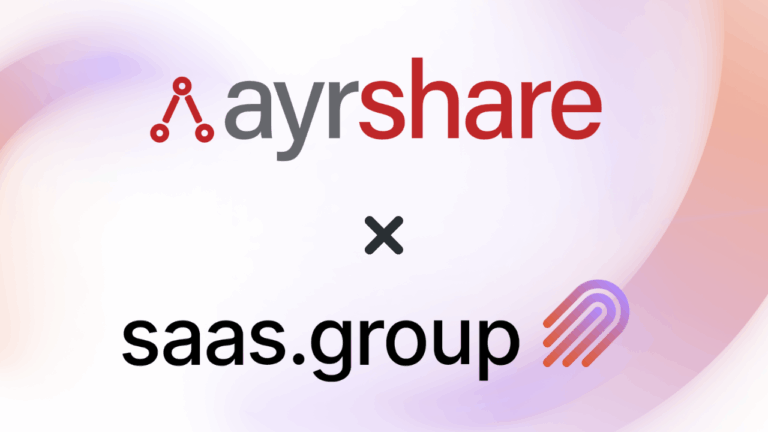And are you ever really ready?
Based on our experience at saas.group, going from the first acquisition chat to an actual deal may take up to several years. Building with an exit in mind is not something founders often do. But when they start to consider one, it’s usually a mix of personal, financial, and strategic factors, in that order.
Planning for an exit may not be the most exciting task for a founder, but when done right, it can align timing, process, market trends, and personal goals well enough to promise a great exit you truly deserve.
The stages of a SaaS business
SaaS businesses typically move through various stages: startup, growth, maturity, and sometimes decline. Each phase demands a different skill set and presents unique challenges:
- Startup: This phase requires creativity, product development, and finding product–market fit. Many companies are sold at this stage (especially in the AI era), but this is more about opportunism than sustainability. These sales are often driven by private equity firms betting on rapid growth.
- Growth: Scaling operations, building teams, and optimizing systems are critical here. This is no longer the 0-to-1 journey. It’s about adding structure and processes and bringing in specialists instead of generalists. It might be the best time to sell, although it can be the hardest time to let go.
- Maturity: Businesses at this stage focus on maximizing profitability and maintaining steady growth. Many face challenges with efficiency and risk plateauing unless they return to the drawing board to rekindle that growth mindset.
- Decline or plateau: If growth stagnates, it may be time to innovate or explore new markets. Unfortunately, this is often when founders start thinking about selling, which can result in less favorable outcomes with reduced negotiation power and fewer buyer options.
Personal goals and post-acquisition plans
Your personal aspirations should be front and center when thinking about an exit. Of course, considering the future of the team, brand, and your legacy is important, but ultimately, you are the one who has to live with the decision.
- Emotional aspect: Letting go of what is potentially your life’s work is a big deal. The journey from idea to exit takes time, not because the offers aren’t good, but because detaching emotionally is hard. That said, you can find an acquirer like saas.group who will keep you involved in a different role. You may continue working on the product with your team even after the acquisition.
- Future plans: Do you have another project or opportunity lined up? We’ve all seen those LinkedIn posts that go from “just sold my company, heading to a remote island” to “I’m bored and unsure what to do next” within a few weeks. Not saying you need a five-year plan, but giving your next step some thought is wise.
- Financial needs: The bigger the deal, the better, right? Not necessarily. Are you selling to fund a new venture, secure retirement, reach a milestone, or simply to take some chips off the table? Your motivation affects the kind of exit you want. And sometimes, saying yes to the right partner instead of the highest bidder pays off more.
- Work–life balance: If running the business has taken a toll, exiting may help you realign priorities. We’ve worked with founders in this situation at saas.group, and one thing stands out: tell your potential buyer why you’re selling. This builds trust and sets expectations. No one wants to bring on a brilliant founder who’s totally burnt out and counting minutes until the day ends.
Business factors to evaluate before selling your SaaS company
Aside from personal goals, several business-specific factors impact your readiness to exit:
- Valuation: Know your worth. Online calculators are a decent start, but consult an M&A broker or advisor for a realistic valuation. Look for social posts and articles. Some founders are very open about their exits. Just remember that no two exits are the same, and you’ll need to be prepared for deep due diligence.
- Financial health: Keep clean, organized records of revenue, expenses, and growth trends. This makes due diligence far easier. At saas.group, we try to streamline this process and give rough valuations early, but that only works if founders know their numbers and can share them confidently.
- Operational independence: Can your business thrive without you? The more your business runs without your day-to-day involvement, the more attractive it is. Making yourself “redundant” may feel strange, but it’s exactly what buyers want. After all, you’ll be moving on eventually.
- Market conditions: Timing isn’t everything, but it matters. Favorable conditions can increase your sale price. Research recent transactions in your niche and check trend reports from acquirers and M&A brokers. Some founders share a lot about their sales online. Don’t hesitate to reach out and ask questions.
- Growth trends: Buyers want growth. If you’ve plateaued, try to revitalize growth before selling. Exiting at the peak is tough emotionally, but waiting too long can hurt your chances or lower your valuation. If an exit is on the table, maximize your return while momentum is on your side.
The power of saying no
Many founders get approached by buyers when they’re not even looking to sell. That’s a great position to be in. It gives you leverage to say “no,” negotiate better terms, or wait for a more strategic fit.
Optionality, focusing on building a great business without chasing an exit, often leads to better outcomes. But this only works if you actually have the option to say no.
That said, don’t feel pressured to sell. If it’s not the right time, it’s not the right time. Just make sure you communicate clearly and respectfully without burning bridges.
Post-sale considerations
The work doesn’t stop when the deal closes. In many ways, it’s just the beginning, for the team, anyway. As a founder, you should be aware of what happens next, especially if there’s an earnout or if you’re staying on in some capacity.
- Onboarding new leadership: Document your workflows and key processes. If there’s no clear successor in your company, the acquirer will need to install someone quickly. Make their transition as smooth as possible.
- Team alignment: Changes can be hard for your team. Even though many buyers advise against announcing the deal too early, you should still plan how to handle that communication. Transparency earns trust. When done right, it sets the new owner up for success.
- Tech stack integration: Yes, change is painful but only in the short term. Consolidating tools helps teams operate efficiently and feel more connected. It also makes operations smoother and cheaper in the long run.
Final thoughts
Preparing for a SaaS exit is a challenge that requires foresight, planning, and a clear understanding of both personal and business objectives. By thinking through your own goals, assessing business health, and staying flexible, you can set yourself up for a smoother, more rewarding transition.
Whether you’re months or years away from an exit, the best time to start preparing is now. And doing it with the right partner may even make the whole experience, dare we say, enjoyable.
Table of Contents
Weekly newsletter
No spam. Just the latest news and articles from the world of SaaS and Acquisitions.




